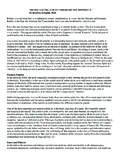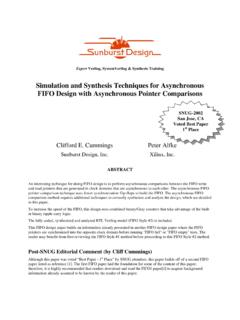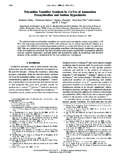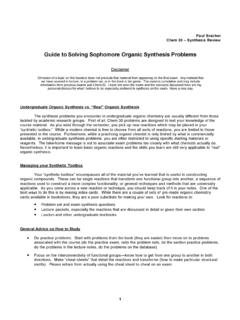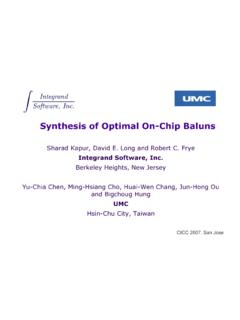Transcription of PSYCHOSYNTHESIS PRACTICE Volume I - The Synthesis …
1 PSYCHOSYNTHESIS PRACTICEV olume IPsychosynthesis Exercises for Personal & Spiritual GrowthCompiled and Edited by Thomas Yeomans, Assagioli was fond of saying to his students " PRACTICE makes perfectly imperfect". In this statement,usually accompanied by his characteristic chuckle, he touched on several central aspects of is the importance of PRACTICE itself, the consistent "doing" of certain exercises that support the process ofpsychosynthesis within oneself over time. Second is the paradoxical affirmation of our "perfect imperfection" asa way of pointing to the fact of continual growth, that we are never "finished" in an infinite universe, and thatthis is "perfectly" all right. Third is that we can actively cooperate with our development and can choose topractice in ways that enrich and deepen our lives. We don't have to wait for this to happen, but rather, throughpractice, we can use our awareness and will to heal and strengthen our personalities so they gradually becomemore coherent and creative instruments for the expression of our true Selves.
2 And fourth is that there actually isa perfection in this process of PSYCHOSYNTHESIS , of "life living itself more deeply", a perfection that is bothmysterious and orderly, that is beyond us and within us, and that we touch both together and alone. Thisperfection we can gradually realize in our daily lives through conscious PRACTICE , and, of course, through simplyliving our given lives to the full, which is the most central PRACTICE of twelve exercises have, over the years, proved central to a conscious cooperation with the process ofpsychosynthesis. Some were developed by Roberto Assagioli, some by members of the San FranciscoPsychosynthesis Institute and the Canadian Institute of PSYCHOSYNTHESIS , and all have been revised over time aswe have learned more about what really helps. They are published here in this pamphlet format for the first timewith the thought that having them in one place will better reveal the relationships between the differentdimensions of PSYCHOSYNTHESIS which they address.
3 In this regard, the earlier (1-5) predominately deal with thepersonal dimension, the middle (6-9) with the transpersonal, and the last (10-12) with the spiritual. Together thetwelve constitute a " PRACTICE " that can be used by anyone wishing to foster healthy psycho-spiritual growth,either in him/herself, or in others. They are educational in the root sense of the word, in that they are designedas a means to educate ("lead out") oneself to our true nature, to the discovery and realization in daily life ofwhat Assagioli called our "Higher Self".Obviously these exercises can be combined with other practices , drawn from a wide range of psychological andspiritual disciplines, East and West, nor do they represent a complete compilation of available psychosyntheticpractices. But these particular twelve have proven central, again and again, to work in PSYCHOSYNTHESIS , andthey are published here in the hopes that they will continue to be of such use in the decades YeomansNo.
4 1 PSYCHOLOGICAL WORKBOOKOne of the most useful instruments for long term self-development is a workbook, diary, or journal. We use theterm 'psychological workbook' because many people tend to associate the word 'diary' with memories ofadolescence in which often trivial and burdensome accounts were kept of one's daily type of workbook suggested here has as its purpose the recording of your inner life and its events may be recorded inasmuch as they are related to inner events (feelings, thoughts, observations),but the focus should be on the unfolding awareness of oneself and the world, and on the new meanings, values,and inter-relationships one is able to are many purposes for keeping a workbook of this sort. One of the most important is to help ourselvesformulate our thoughts, feelings, and observations with greater clarity.
5 And in the act of putting something onpaper we tend to commit ourselves to a greater extent. We are taking a step beyond simply thinking or sayingsomething when we make the effort to write it down. Also, in the process of thought clarification throughwriting, we are obliged to choose between alternate points of view, we are thus less likely to deceive ourselvesby holding contradictory views without being aware of it. If there is a problem to be solved or an area of realconfusion, we are better able to define it and thus take the first step towards its act of writing is also a great stimulus to the creative process. When we are trying to grapple with a problem,it is a common experience that in writing down a few thoughts on the question, other related thoughts begin tostream in through a process of association, and these ideas in turn open up new avenues of thought, newpossibilities we may not have considered before.
6 If we can learn to let our minds range freely in this manner, wewill be truly amazed to discover the depth of the insights already within us just waiting to be a workbook as a technique of self-development also functions in other ways. It gives us an opportunityto express in a harmless way any powerful and disruptive emotions we may have bottled up inside us. If we canlearn to 'let off steam' through writing, we will have a useful means of discharging tensions, and of becomingaware of what underlies them. Writing is also a useful exercise for developing the faculties of concentration,attention, and control of the will. It may help a person who is somewhat shy, and reluctant to express himself ina face-to-face setting, to explore certain aspects of himself more freely. For all these reasons keeping aworkbook can be an important aspect of the PSYCHOSYNTHESIS process in that it is a method which one canemploy on his own initiative, as he takes the process of his growth and self-realization increasingly into his addition to written material, one can make drawings and other visual aids a part of the workbook.
7 These maybe of various kinds. In one category are images which may come to you in the form of dreams, fantasies, orvisualizations. In another category are diagrams, more abstract symbols, or visual aids which we can use toexpress our ideas in graphic form. This is useful in developing dear concepts and in communicating theseconcepts to others. A final category is what one might call 'spontaneous drawing'. This should be done when weare in a relaxed state of mind and when our attention is fixed on something else as when we are drawings reflect the activity of the unconscious mind and may be of value in self-understanding. Thus,drawing as well as writing can be part of a complete are headings of possible areas for inclusion in your workbook. It is suggested you choose among them theones that, according to your own needs and experience, are likely to be of greater value.
8 But, of course, yourchoice can be revised at any time. It is important to date each entry, in order to provide a with ideas: Include a heading for any area of vital intellectual interest in which you are trying toadvance your own understanding , Education, Religion, Mathematics, Systems Theory, Ecology, with persons: Insights into or questions about your with events: Your response to meaningful events in your life: note occasions on which you are awareof 'synchronicity'.Inner dialogues: Miscellaneous thoughts, musings, intuitions, questions, or speculations which do not fit underother : Description, context, associations, and amplifications of your night dreams (which are most easilyrecorded immediately upon waking.)Imagery: Visualizations, or experiences in other sensory modalities. This may include images which comespontaneously or while using one of the guided mental imagery techniques.
9 These can be recorded in writingand/or through drawings. It is helpful to record the feelings and associations you have in response to the image,or to different parts of it (form, color, etc.), its meaning for you, and a tentative interpretation if : Fantasies, stories, situations, etc., which might serve as the seed for an imaginative work. Thiscategory is best limited to those fantasies which have some creative : Graphic models of theoretical constructs (though you may wish to include these under the headingsof the various areas of intellectual interest instead). These will help you express your thoughts visually, and thismay be useful for purposes of clarification and visual : Notes on techniques of meditation with which you have experimented, seed ideas used, and resultsobtained. Note any insights or intuitions which come : Notes on your sense of personal identity, answers to the 'Who Am I?
10 ' questions, experiences with 'self-remembering' and other meditative techniques related to the question of essential : Notes on your experience with the various stages of the will, and evaluation of your areas of strength andweakness. Note any occasions and their distinctive circumstances in which you were aware of yourself makinguse of the will, and record your results with the exercises for developing the for growth: Your experience with the various approaches which do not fall under other note as fully as possible the circumstances under which the various approaches were helpful or not andyour opinion of the reasons underlying success or failure with a particular experiences: Any 'high' or 'deep' experiences of peace, joy, love, expansion, awakening, etc., and theircircumstances and : Personal weaknesses of which you are aware and on which you would like to work.
